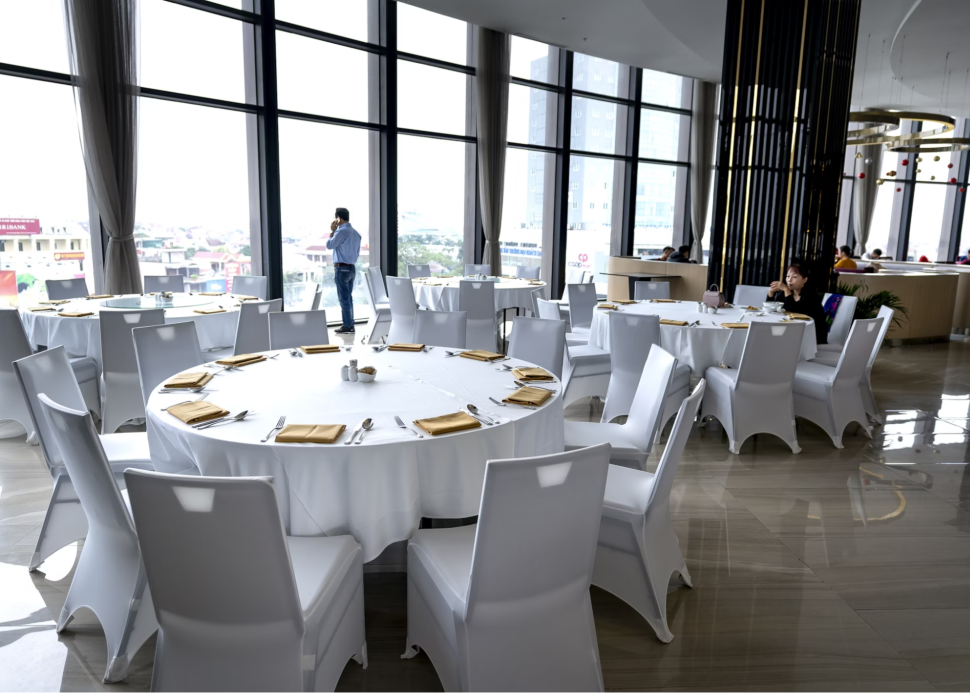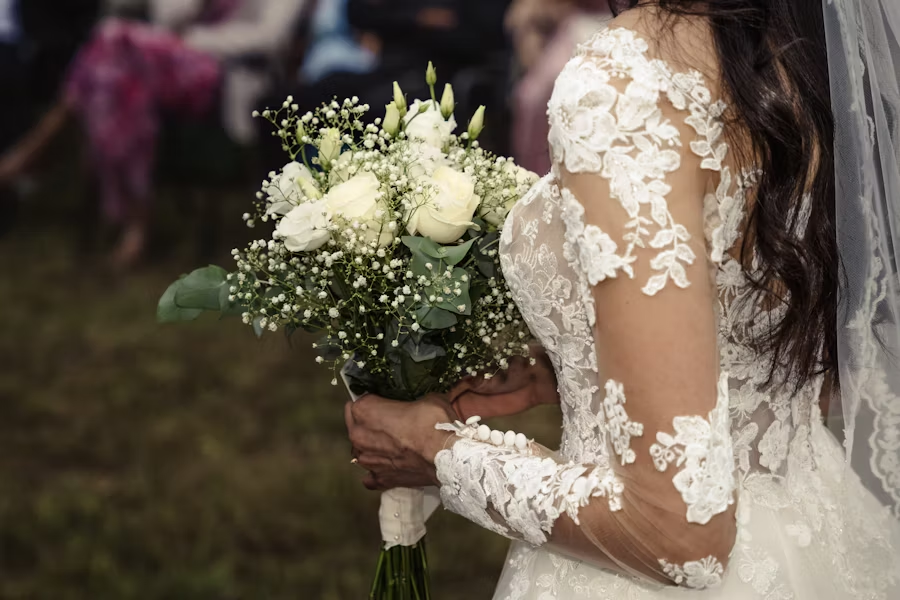The Hidden Economics of Event Planning: When to Invest and When to Save

Anyone who’s planned a wedding, corporate function, or milestone party knows the overwhelm of endless decisions—venue or catering, pro photography or a friend, décor or savings. Every choice feels weighty, yet clear guidance on which expenses deliver real value versus which are optional is scarce.
This confusion is natural. Events are one-time creations where dozens of elements interact unpredictably. ROI isn’t measured in resale value but in guest experience, brand perception, relationships, and memories—harder to quantify with standard cost-benefit logic.
The industry adds to the challenge, offering every element at every price point with marketing that makes each sound essential. Budget advice often swings between “cut everything” and “spend on anything special,” neither of which helps.
Yet event economics follows recognizable patterns. Certain elements consistently deliver disproportionate value—shaping the entire experience, signaling quality, or serving multiple functions. Others cost a lot but add little. Learning to distinguish between these categories is what separates planners who create memorable events within budget from those who overspend or underdeliver.
The Foundation: Fixed Costs That Shape Everything
Every event has foundational elements that shape all subsequent decisions, and getting them wrong can compromise the entire event. Venue selection is a prime example: poor acoustics, limited parking, or inflexible catering can add hidden costs, while a beautiful, well-maintained venue may reduce decoration needs. For corporate events, the true economic value considers these secondary effects—sometimes a pricier venue with ideal features is more cost-effective than a cheaper one that requires extra spending to achieve the desired impact.
Corporate function venues that understand this holistic value proposition offer more than just space—they provide infrastructure, services, and atmosphere that reduce the total cost and complexity of creating successful events. The premium you pay for a quality venue often returns value through simplified logistics, enhanced guest experience, and reduced need for supplementary investments in areas like decoration, lighting, or equipment rental.
Location economics also extend beyond the venue itself to accessibility considerations. A venue that's difficult to reach or lacks adequate parking might cost less to rent, but attendee inconvenience has real costs—reduced attendance, stressed guests who arrive late or frustrated, diminished perception of the event's importance. For corporate functions particularly, venue accessibility communicates respect for attendees' time and contributes to the professional impression you're creating.
The timing of venue booking also has economic implications often overlooked in initial budgeting. Peak dates command premium pricing while off-peak dates might come with significant discounts or added value. Similarly, booking well in advance often provides both better selection and better pricing, while last-minute venue searches force you to accept whatever's available at whatever price. The flexibility to be strategic about timing can create substantial savings without compromising quality.
Another foundational consideration is whether the venue's existing equipment and infrastructure meets your needs or whether you'll need to supplement significantly. Does it have adequate audio-visual capabilities or will you need to rent everything? Is the lighting suitable or will you need to bring in additional equipment? Do the existing furniture and table settings work or will replacement be necessary? These supplementary needs can quickly exceed the base venue cost if not considered upfront.
Strategic Equipment Decisions: Ownership vs. Access
Beyond venue selection, many events—particularly corporate functions, large-scale celebrations, or business gatherings—require equipment that raises a fundamental economic question: should you own equipment that you'll use repeatedly, or should you rent or access it as needed? This decision involves calculation that extends beyond simple cost comparison to include factors like storage, maintenance, flexibility, and opportunity cost of capital.
For businesses that regularly host events, the equipment question becomes particularly acute. Audio-visual equipment, furniture, decorative elements, serving equipment—these items represent substantial costs when rented repeatedly, suggesting that ownership might be more economical. However, ownership brings hidden costs: storage space, maintenance and repairs, obsolescence risk, insurance, and the capital tied up in assets that don't generate revenue. The calculation isn't simply rental cost multiplied by number of events versus purchase price.
The question becomes more complex when considering equipment beyond event-specific items. Many businesses face similar calculations around vehicles, machinery, technology, or other capital equipment that supports operations including event hosting. The decision framework is similar: total cost of ownership versus total cost of access, flexibility needs, expertise required for maintenance, and how capital allocation affects other business opportunities.
Equipment loans adelaide options provide a middle ground between outright ownership and repeated rental—allowing businesses to access equipment when needed while spreading costs over time and preserving capital for other investments. This financing approach makes sense when equipment will be used regularly enough to justify acquisition but when paying cash upfront would create cash flow constraints or prevent other strategic investments.
The economic analysis should consider utilization rate—how frequently you'll actually use the equipment. Items used monthly or more might justify ownership. Items needed quarterly might warrant financing. Items used annually or less typically make more sense to rent despite the per-use cost being higher, because the total cost remains lower and you avoid the ongoing burden of maintenance and storage.
Quality considerations also factor into the ownership-versus-access decision differently than you might expect. For owned equipment, quality matters immensely because you're stuck with your choice for years—buying cheap equipment that breaks down or performs poorly becomes expensive through repairs and replacement. For rented equipment, you have more flexibility to specify quality standards without bearing long-term cost of premium items. This dynamic sometimes makes rental more economical for high-quality equipment you need occasionally.
The expertise required to maintain and operate equipment also affects economic calculations. Professional-grade audio-visual equipment, for example, might seem cost-effective to own if you host monthly events, but if you don't have staff with expertise to operate it properly, you'll still need to hire technicians. In such cases, working with a full-service provider who brings both equipment and expertise might deliver better value despite higher per-event costs.
Flexibility represents another often-overlooked economic factor. Owned equipment locks you into specific capabilities—the sound system you bought three years ago, the projection equipment that's now outdated, the furniture in a style that no longer suits your brand. Accessing equipment as needed allows you to adapt to changing needs, try different approaches, and always use current technology without bearing the full replacement cost each time standards evolve.
Where Customization Creates Value
While foundation elements and equipment decisions involve primarily practical economic calculations, certain event elements offer opportunities for differentiation and personalization that create disproportionate impact relative to their cost. Understanding where customization delivers real value versus where generic options work fine is crucial to optimizing event spend.
Visual elements—how the space looks, what catches attention, what creates atmosphere—have an outsized impact on how guests perceive and remember events. First impressions form within seconds of entering a space, and visual coherence throughout the event influences subconscious perceptions of quality, professionalism, or thoughtfulness. This is where strategic investment in customization can deliver returns that far exceed the incremental cost over generic alternatives.
Balloons, often dismissed as children's party staples, actually represent sophisticated visual tools when used strategically in adult events. The economic case for custom balloons versus generic ones isn't primarily about the balloons themselves—it's about what they enable. Generic balloons require significant additional decoration to create impact. Custom balloons in specific colors, shapes, or with branding can anchor an entire design scheme, reducing the need for more expensive floral arrangements, constructed decorations, or rental props.

Custom balloons offer particularly strong economics for corporate events where brand visibility matters, product launches where creating immersive environments justifies investment, or large celebrations where visual impact across big spaces requires volume. The per-unit cost of custom versus generic balloons is incremental, but the effect on overall decoration budget and achieved impact can be substantial—fewer total decorative elements needed, stronger cohesive look, and greater guest engagement with the environment.
The timing economics of decoration decisions also matter significantly. Last-minute decoration planning forces you to accept whatever's available from local suppliers at standard pricing. Planning ahead enough to order custom elements allows you to be strategic about design, competitive about sourcing, and efficient about installation. The labor costs of decorating can actually exceed material costs when you're working with poorly suited generic items that require extensive manipulation to look acceptable.
For children's events specifically, the economics shift because expectations and attention spans differ from adult events. Children notice and respond to visual elements more immediately than subtle atmospheric touches that adults appreciate. Bright, engaging, interactive visual elements deliver high value in children's events, while expensive but understated elements that work well for adult gatherings may go completely unnoticed. This suggests reallocating budget toward bold visual statements and away from subtle sophistication.
The personalization principle extends beyond decorations to gifts, favors, and takeaways. Generic gifts feel obligatory and often get discarded quickly. Personalized or carefully selected gifts that show thought about the recipient or occasion create lasting positive associations. The economic question isn't generic versus personalized cost—it's the value of positive memory and relationship strengthening versus the cost of items that provide no lasting benefit.
Understanding what resonates with different age groups dramatically affects gift economics in children's events. Young children respond to immediate sensory appeal—bright colors, interesting textures, things that make sounds or move. School-age children appreciate items related to their current interests and things they can actually use. Teenagers value quality and coolness over quantity. Each age category requires different investment strategies to create value rather than waste.
The bulk purchasing economics for children's events also deserves consideration. When planning events for multiple children, buying in quantity can dramatically reduce per-unit costs while maintaining quality. However, this only creates value if the items are appropriate and appealing—bulk purchasing of poor-quality items still represents waste even at low per-unit cost. The strategy should be quality items purchased efficiently rather than maximum quantity at minimum individual cost.
Childrens day gift selections demonstrate this principle well—even modest items become special when chosen thoughtfully for age-appropriateness, interests, and ability to create joy. The economics favor selecting fewer, better items over more numerous generic items. A single well-chosen gift that delights creates more value than multiple forgettable items that cost the same in aggregate but feel like obligation rather than genuine gesture.
Brand consistency across custom elements also delivers economic value often missing from calculations. When custom balloons, signage, favors, and other elements all reflect consistent colors, style, and messaging, the effect is professional and memorable. When these elements are generic and mismatched, the impression is chaotic and cheap regardless of individual quality. The incremental cost of coordinating custom elements is small, but the perceived value difference is dramatic.
The theme coherence principle particularly matters for children's events where a strong, clear theme helps everything make sense and feel intentional. Rather than scattered decorations and random gifts, a cohesive theme allows each element to reinforce the others, creating an immersive experience that feels special. This coherence can be achieved at various budget levels—it's about consistency and intention rather than expense.
The Floral Investment: Where Beauty Meets Strategy
Few event elements span the range from purely optional to absolutely essential as dramatically as flowers. On one end, some perfectly successful events use no flowers at all. On the other end, florals sometimes represent the largest single line item in event budgets. Understanding where flowers deliver strategic value versus where they're decorative luxury determines whether floral investment enhances your event economics or strains them unnecessarily.
Flowers serve multiple functions simultaneously, which is why their economic value is complex to assess. They provide visual beauty, certainly, but also fragrance, texture, natural element that soften architectural spaces, and sophisticated atmosphere that's difficult to achieve through other means. When flowers serve multiple purposes—decoration, ambiance creation, and sensory enhancement—the cost becomes easier to justify than when they're purely decorative.
Context shapes floral economics. In elegant venues, minimal arrangements enhance the space economically. In plain or dated venues, more florals are needed to create atmosphere, increasing costs—another example of how venue choice drives downstream expenses. There are many places to search for these - you'll find lists of the top 5 websites.
For corporate events, florals influence professional impression and brand perception. High-quality, appropriate arrangements signal attention to detail and respect for guests, creating an atmosphere aligned with the event’s purpose—sophistication for formal functions, energy for celebrations, or natural beauty for wellness events—adding value beyond aesthetics.

Wedding and formal events represent contexts where floral investment typically justifies premium allocation because flowers contribute so substantially to the overall aesthetic and photographic outcome. The flowers visible in every photo mean their value extends beyond the event day itself into how the occasion is remembered and shared. This extended value horizon changes the economic calculation from event-day decoration to lasting visual record.
Summers Winter Florist demonstrates how specialist expertise in event florals delivers value that generic flower arrangements cannot—understanding of which blooms work in different conditions, design sensibility that creates cohesive looks, technical skill in construction that ensures arrangements last throughout events, and strategic approach that maximizes impact while working within budgets.
Timing affects floral costs. Last-minute orders often come at premium prices, while planning early allows selection of seasonal blooms, which are more affordable and visually superior. Price differences between in-season and out-of-season flowers can be dramatic.
Budget allocation matters as much as total spend. Focusing investment on high-impact areas—ceremony focal points, reception entrance, head table—creates stronger impressions than spreading the budget thin. This approach allows for quality where it counts while using economical alternatives elsewhere.
Florals also enhance photography. Well-designed arrangements photograph beautifully, adding lasting value to professional photos. If photography is a priority, floral investment extends beyond the event; if not, the case for extensive florals diminishes.
The Hidden Multipliers: Service, Coordination, and Expertise
While most event budgets focus on tangible elements—venue, food, decorations—some of the most consequential factors are intangible services that multiply the value of everything else. Knowing where to invest in expertise versus DIY determines whether your tangible investments deliver their potential or fall short.
Professional coordination often seems like overhead, but it provides efficiency, error prevention, and optimization. Coordinators know which vendors deliver quality, which combinations work best, optimal timing for pricing, and pitfalls to avoid. Their expertise prevents costly mistakes and maximizes ROI.
Time economics also favors professionals. Hours spent researching, coordinating, and managing logistics have real cost—monetary or personal. Hiring experts converts diffuse time costs into a defined fee while often saving money overall.
Service quality amplifies all other investments. Attentive staff make moderate food taste better, standard venues feel upscale, and guests feel valued. Poor service undermines even excellent food and spaces, making service investment often the highest ROI.
Technical expertise—photography, lighting, audio—similarly elevates the experience. Professionals create seamless outcomes that decoration alone cannot achieve; mistakes in these areas dominate attention.
Insurance and contingency planning are hidden economic saviors. Risks like weather, illness, or vendor failures are costly if unplanned. Appropriate insurance and backups may seem optional until needed, then prove worth far more than their cost.
Making Strategic Trade-offs
The art of event economics lies in strategic trade-offs that optimize investment versus outcome. This requires clarity about your event’s purpose, understanding your audience, and discipline to invest heavily in high-value elements while saving on low-value ones.
Purpose clarity is foundational. A corporate event aimed at impressing clients demands different allocations than team-building for employees. A wedding prioritizing photography differs from one focused on guest experience. A children’s party emphasizing engagement differs from one where adults are primary. Aligning spending with actual goals prevents waste on elements that don’t serve them.
Audience understanding also guides investment. Some notice subtle details, others care more about atmosphere, food, or music. Knowing your audience allows money to be concentrated where it matters and saved elsewhere.
Making dramatic trade-offs often produces better results than spreading budgets evenly. A modest venue with spectacular food may outperform a grand venue with mediocre catering. Strategic concentration creates excellence where it matters and adequacy elsewhere.
Timing strategy offers savings without quality compromise. Off-peak dates, advance booking, and seasonal considerations allow funds to be reallocated to non-flexible priorities.
Long-term vendor relationships deliver additional economic value. Repeat vendors provide better pricing, flexibility, and priority access to top staff. Building these relationships compounds value across multiple events.
The Real ROI: Experience and Memory
Event economics should be measured by outcome, not just cost. Most events deliver experiential and relational value—how people feel, what they remember, how relationships are strengthened, and what impressions are created—rather than financial return. ROI is harder to quantify but no less real.
Guest experience determines whether an investment was worthwhile. Enjoyable, meaningful, and comfortable events succeed economically; poorly executed events fail regardless of savings. Investments should focus on elements that create positive experiences for your specific audience.
Memory formation provides lasting return. Distinctive moments—beauty, surprises, emotion, sensory engagement—extend value beyond the event day. Spending on unnoticed elements is wasted.
For corporate events, relationship and perception outcomes matter. Strengthened client ties, improved employee morale, and enhanced brand perception deliver value exceeding cost, while failing to meet these objectives represents wasted investment.
Avoid the comparison trap. Social media pressures to match elaborate events ignore differences in purpose, audience, and context. Measure your event’s economics against your goals and constraints, not others’ highlight reels.

.jpeg)
.jpg)